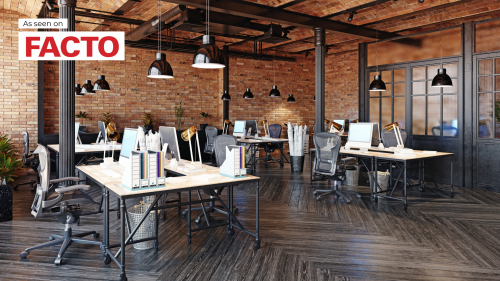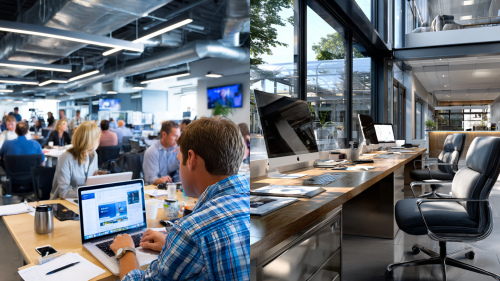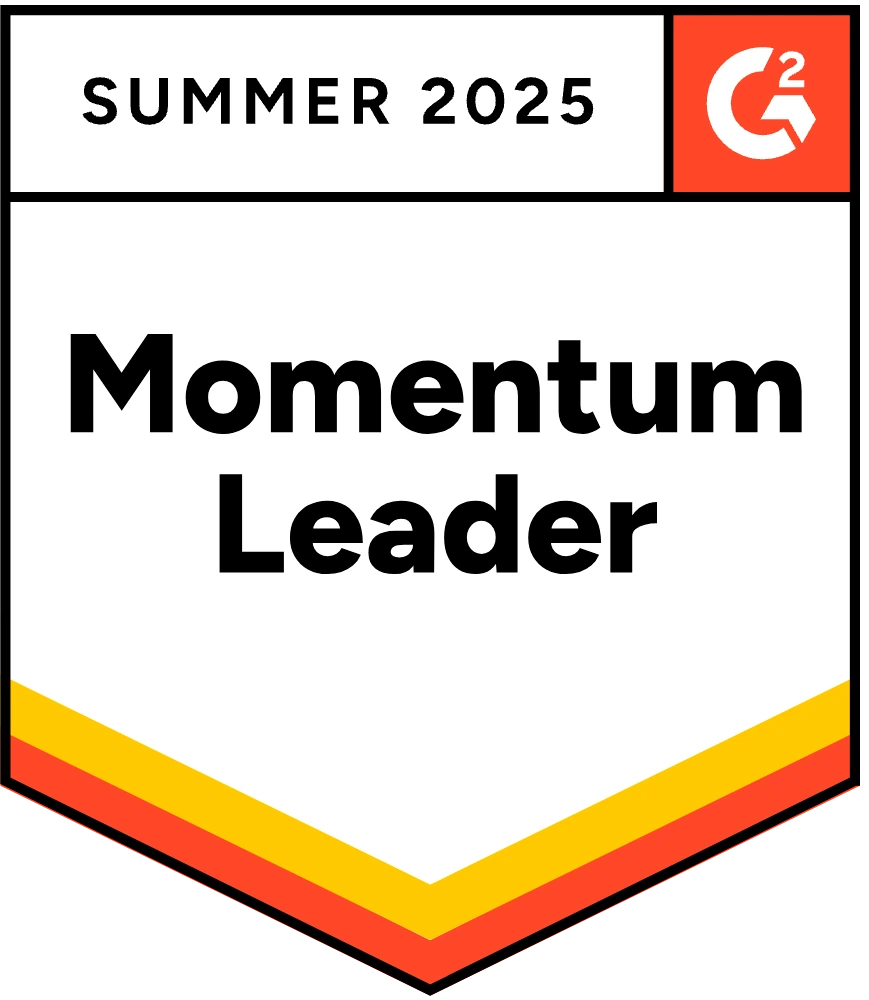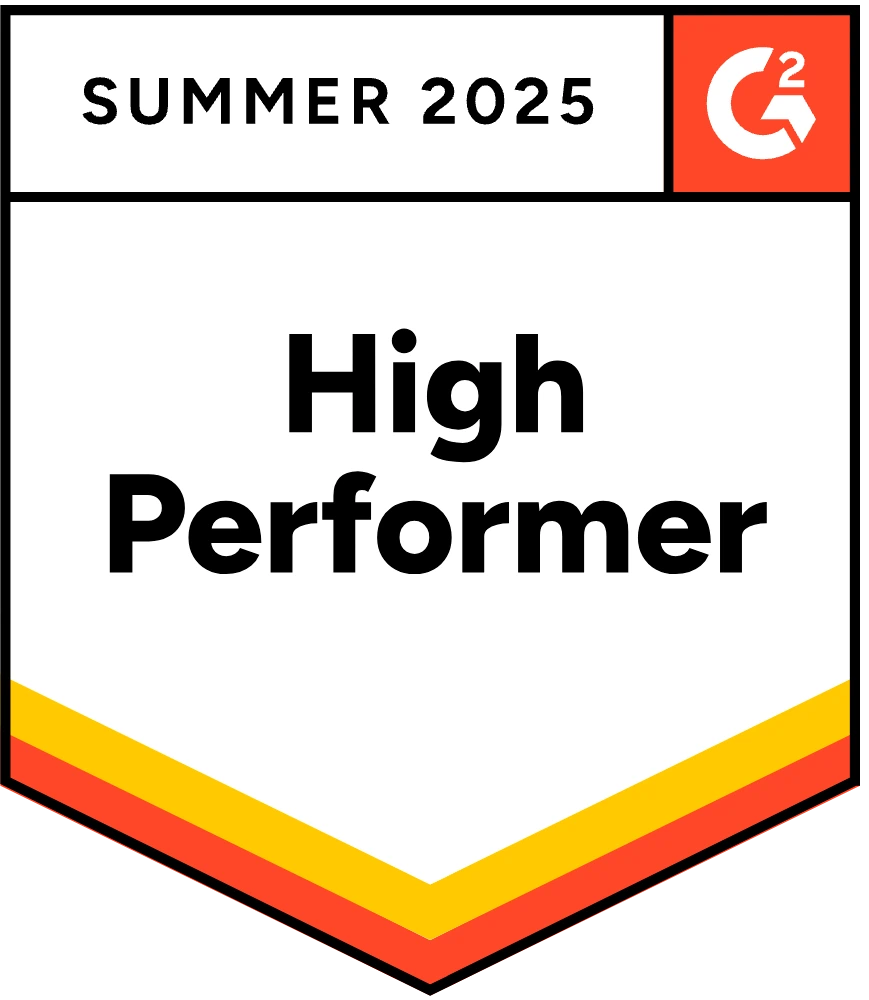One thing is clear: the offices of the future will have to work much harder to attract tenants and meet the needs of workers. Following the COVID-induced WFH experience, employees and businesses have different expectations of the workplace. The trend will be for office leases to become more short-term, for occupancy levels to vary more widely, and for space to be offered as a service. As this piece in the New York Times argues: “The office will become more of a consumer product. And just like every consumer product, the office will have to continually fight for its customers.”
Leesman, a research company that specializes in measuring and analyzing employee experiences, in 2019 found that nearly 40 percent of employees felt their workplace did not enable them to work productively. Before COVID the office world was already moving away from fixed schedules and assigned seating, in favor of more flexible, activity-based working. In the post-pandemic world, we are going to see even more flexibility around work styles and places of work. Workers will be moving between home offices, a downtown HQ, suburban satellite offices or a local coffee shop, depending on the type of activities they have planned.
Real-time data & analytics
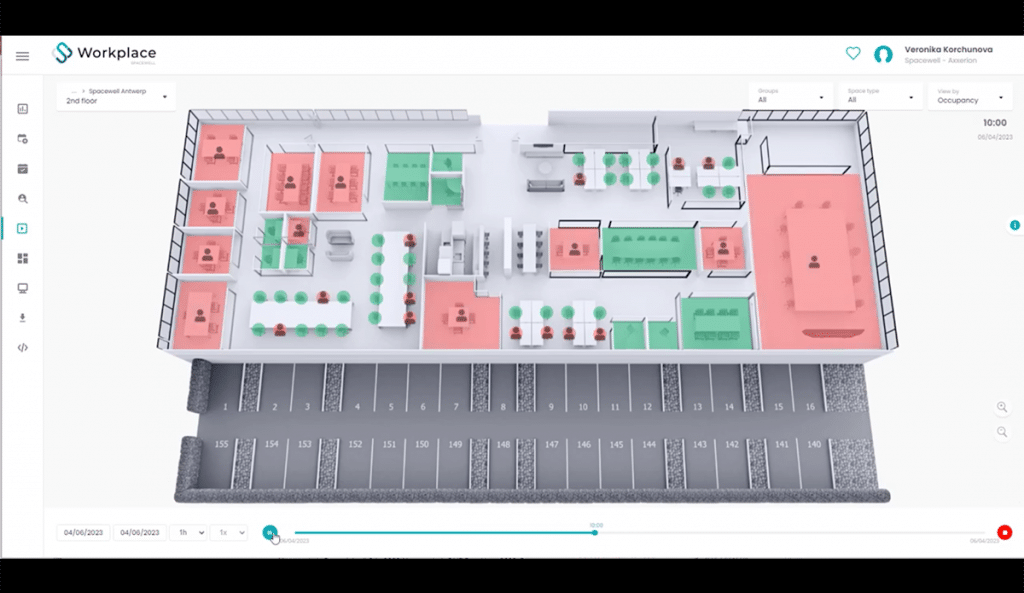
To manage this kind of hybrid environment effectively, workplace leaders need better data and better analytics. Traditionally, IWMS software focuses on best-practice process automation to achieve operational efficiencies. This is still an essential part of running a facility, but it is no longer sufficient. To be successful in the new world of work, facility management software needs to be augmented with real-time data streams about ambient conditions and the utilization that occupants make of various spaces. IWMS needs to be at the fingertips of workers, who expect their agile workplace apps to be as interactive and intuitive as their consumer apps. And the best facility management software will also provide powerful data-analytical capabilities to truly understand the dynamics of what goes on inside buildings.
To be successful in the new world of work, facility management software needs to go beyond process automation to achieve operational efficiencies.
As we have argued in a previous blog post, this requires IMWS software to merge with smart building technology, into what we call IWMS+. By integrating across the two systems, IWMS+ can access more high-quality, real-time data than either system would be able to do individually and deliver those insights across business silos and user types.
If you are looking for the best facility management software for the new world of work, here are 3 essential characteristics to look out for:
1. The best facility management software offers native integration
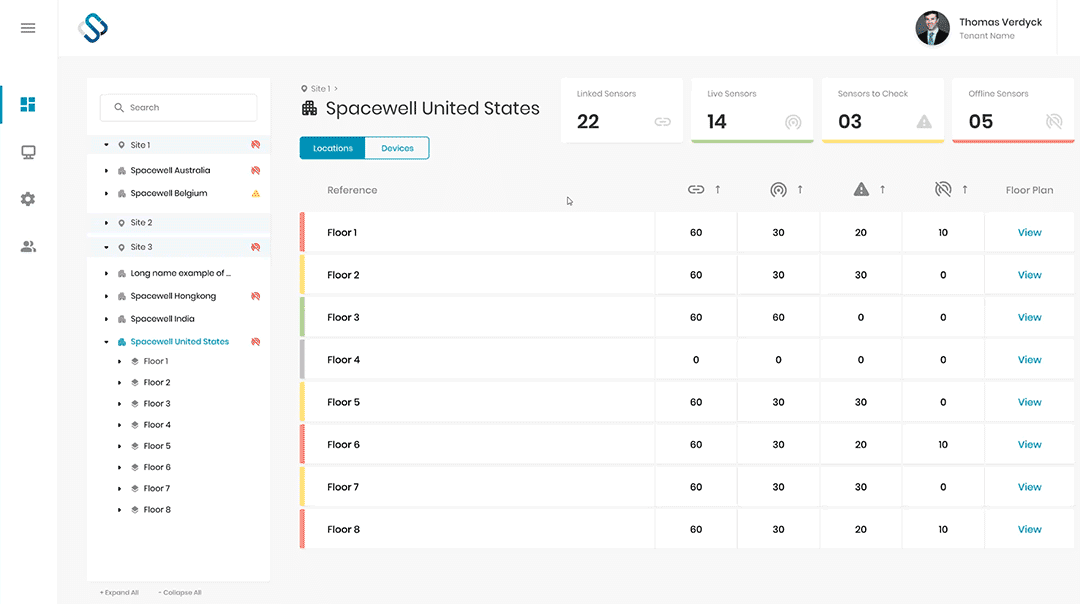
For IWMS+ to work seamlessly, IWMS and smart building platforms need to be fully integrated. This means they are developed from the ground up and designed to work together with zero compromises. We are seeing quite a few IWMS vendors paying lip service to IoT and adding sensors as an afterthought. Unfortunately, this can only result in unfulfilled expectations and disappointment.
An FM system with sensors on the side is like speeding a car at night with the headlights on but your hands and feet are tied.
Eric Van Bael
Because sensors are only a part of the solution. And because working with IoT big data is very different from the kind of structured data processing that happens in IWMS. Furthermore, smart facility software need not only make sense of real-time IoT sensor data, but it must also do that in combination with other data sources such as BIM/rich asset data or the data streaming from user devices.
2. The best facility management software provides dynamic analysis
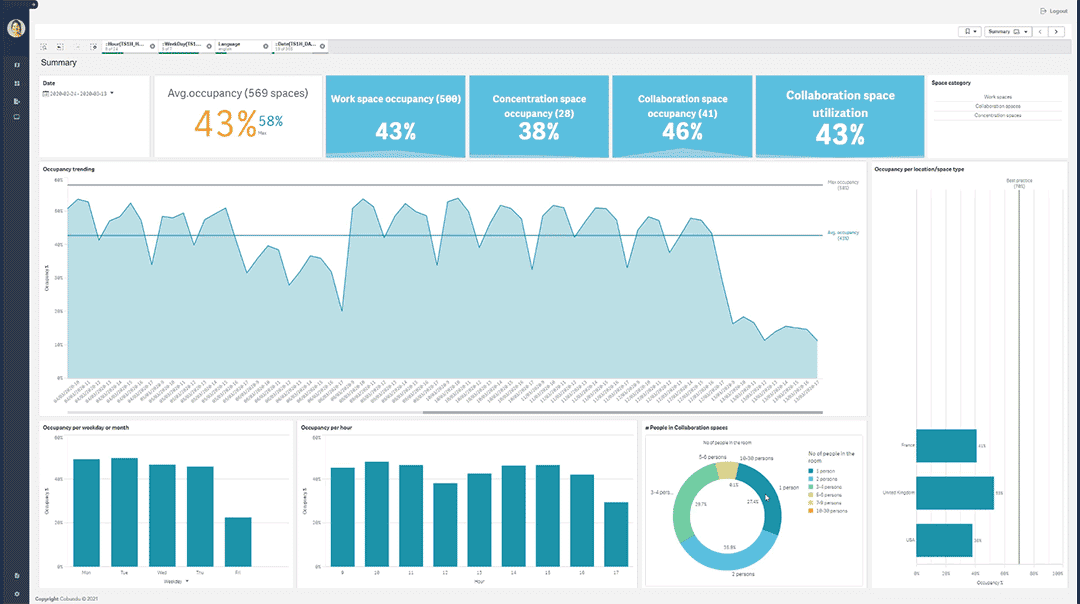
Traditional dashboards show aggregated data in a static way. You take the data, filter the wanted data set and see the results. It may be presented in a nice way, but it does not go beyond “read-only” information. It does not enable workplace leaders to click through the data, find correlations, and understand root causes.
To make the data serve a real purpose requires a different kind of analytical tool – one which does not just “label” things but connects the dots and uncovers the affecting factors: “Occupancy in that part of the building went down last week, because comfort was negatively impacted due to a problem with the HVAC system.” This kind of insight is possible because you have a dynamic view of the full data. Whenever you change a single parameter, the whole dashboard adapts dynamically. The software makes it easy to look at your workplaces and real estate from a bird-eye’s view and then zoom in to a more granular level until you get at the detail you need.
3. The best facility management software offers mobile support and an intuitive UX
Real-time analytics convert the data into useful information for both building users and service providers, when and where it is needed.
Facility teams move around buildings and sites a lot: they need to be able to access relevant information on the go. A smart service app such as the Work Assistant combines scheduled tasks with service requests and sensor-triggered interventions – all neatly prioritized and shown on floor plans. With such a tool, service provider staff can dynamically manage their daily work and respond to real-world events as they are happening. This is the new world of dynamic, outcome-driven service delivery, enabled through IoT-related technologies.
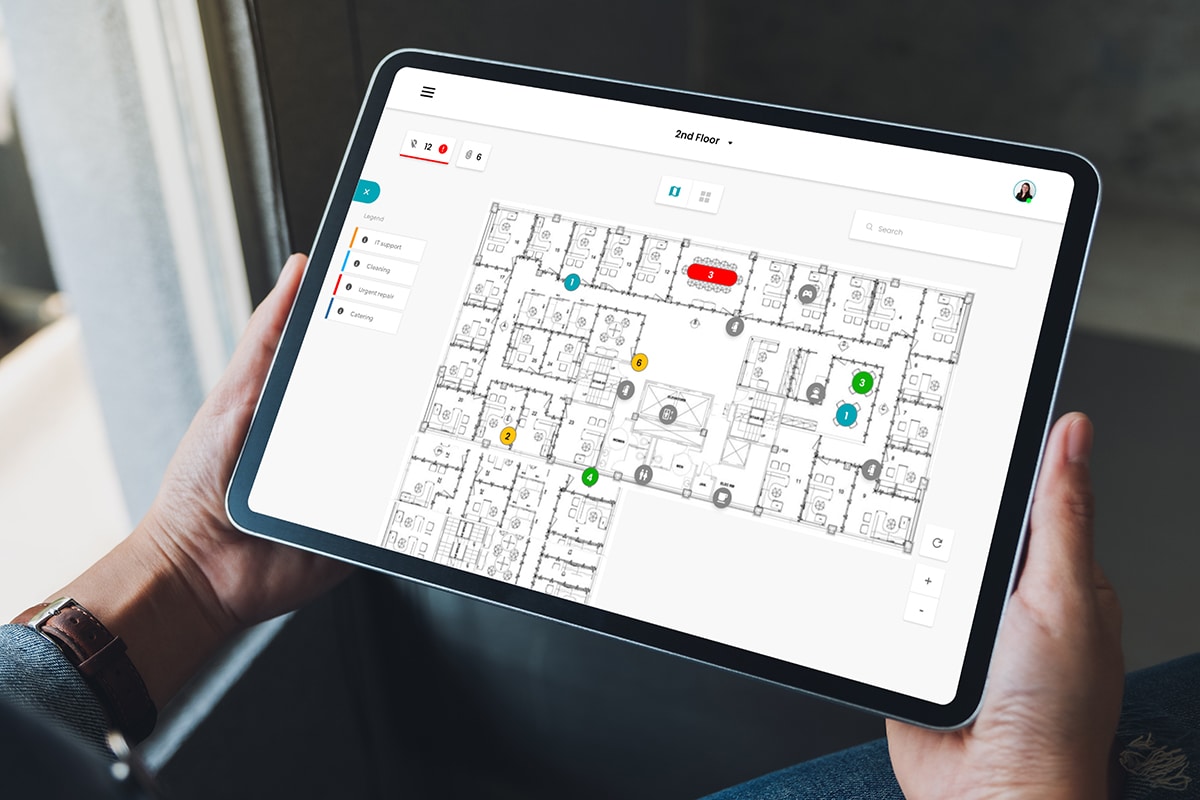
With mobile digital support, employees can have a more productive workday. The best IWMS+ software includes user apps that provide real-time guidance. Either on workers’ own smartphones or through a range of other intuitive touchpoints. Spacewell’s Workplace app, for example, makes it easy for employees to navigate their workspaces and resources. They no longer need to walk around to find a suitable space, their smartphone shows them there is a free space on the next floor, with the right amenities and comfort.
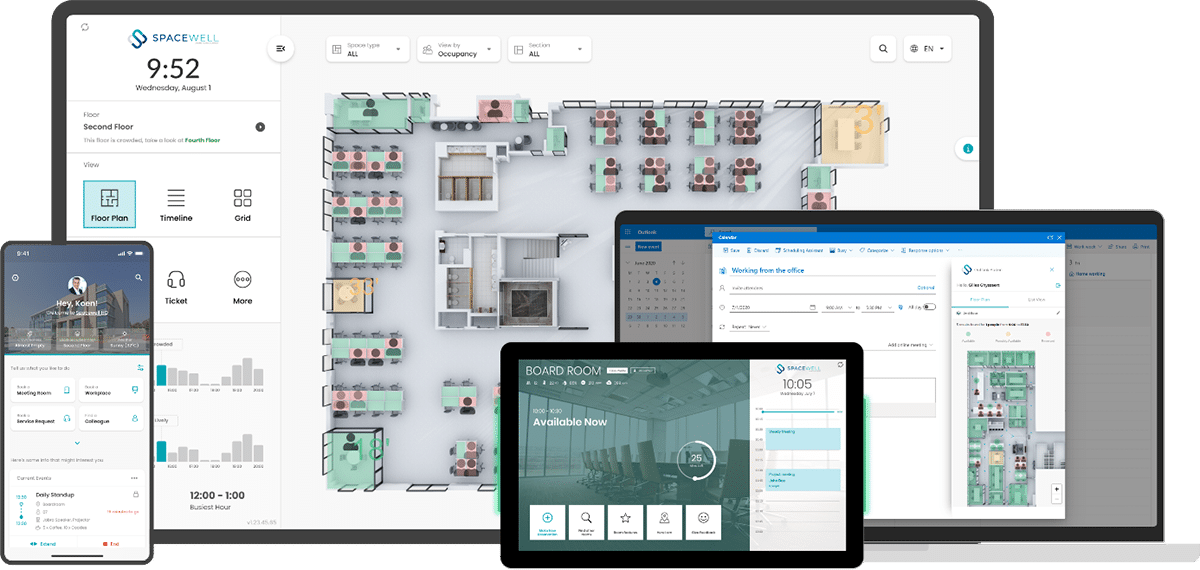
Of course, future-proof facility management software offers more features, such as enterprise-level security and SaaS delivery. But these should be a given these days.
Ready to take a closer look at our hybrid workplace solutions? Request your PERSONALIZED DEMO.



